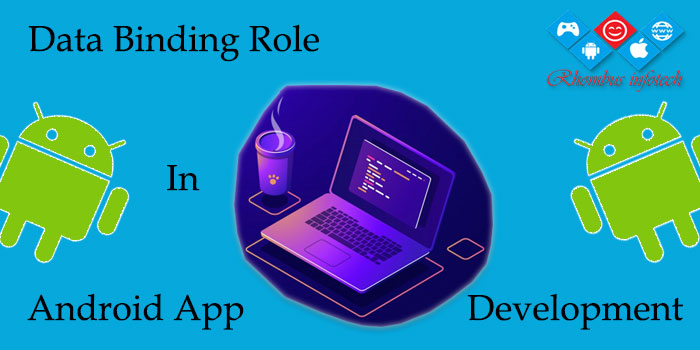“Today, in this blog post we will talk about the role of data binding in android app development”.
What is Data Binding?
Connecting or linking android code files with different user interfaces during the process of android app development is one of the most important tasks of top android application developers. Android data binding is the process of creating connection between app user interface and its relative displaying data. By using data binding technique, it helps to boost up faster development of android applications, faster execution time and easier to read & maintain code. Data binding is an android library that supports developers to bind UI data components or layouts of application by using a declarative format. Every competent android developer prefer to use data binding library as it is official google library which further leads to MVVM architecture.
Using Data Binding Technique for Android Application Development
Do you hate using different views by their view ID’s? The solution for this is data binding. Data binding allows developers to well coordinate user interface with your application development model and logic architecture in a declarative format rather than programmatically. This minimizes the need of necessary code in your application code logic to connect to different user interface components. The usage of data binding requires at the moment when there is some changes happens in application layout files.
Now the main question hovering over the newbies of android development is why data binding so important and can it actually help to improve the ways of building android apps? There is a lot to talk over this and let’s get started!
- Data binding expressions are completely declarative expressions i.e. it describes the building structure of programs that expresses the logic without describing its control flow. So therefore, declarative code is much easier to understand than imperative one because declarative code express what you want to do instead of how you want to do it and eliminates the time of execution as well.
- Writing expressions in layouts resulting in removing a lot of required code in app activities and fragments to handle the content to be displayed in the layout elements. Less code leads to faster development of applications and a very low amount of bugs.
- Data binding helps to lower down the dependencies between application layouts and its code hence layouts itself show how to draw the received data or information leading to no longer need of highly dependent activities or fragments and text files. The outcome is much more reusability of activity or fragment code files.
- During the process of working with layouts, it is important to check out how a specific contextual field will be filled out. Without data binding process, you have to look for the activity or fragment that uses layout and there after look for where findViewById is performed & find out how that view gets filled in with your data. In data binding, all of your contextual information is within the same XML file which becomes immediately visible that leads to saving on more time and efforts with no need of switching language.
- In addition to less code feature, data binding service helps to protect the code expressions against null pointer exceptions if the data is null, that will even work if the passing parameters are null. The resulting output is less fragile code by avoiding errors as per developers perspective forgetting to apply some null checks.
- Android data binding technique features the issue detecting during compilation which does not affect the performance of app.
- Data binding is very easy to adopt which does not require big refactors & further more you can decide to use it in other projects instead of an all or none approach.
- Data binding also open the doors of better integration of other programming paradigms and architectures like reactive programming or MVVM.
- Use of less code and lower dependencies in data binding, your app activities managing the view results is much easier to test, especially in that case when you follow a MVVM approach.
Conclusion:
In this post, we have covered some basics of data bindings of android application and explained the most important features of this technique which reflects the benefits of this technology & ensures that this will become famous quickly to build android apps.

